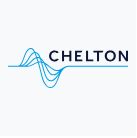Wind vs Radar: A tumultuous relationship
Imagine a world where aviation and wind farms can cohabitate in peace

It provides a roadmap to a more sustainable way of living for the human race. As the world looks towards a more renewable future, wind farms are set to play a key role. But the harmonious co-existence of aviation and the wind sector has been challenging to say the least.


Air Traffic is managed through Air Traffic Management systems which uses a variety of data sources including primary radar. Wind turbines within a radar region are not a good mix. With blade tip speeds of up to 7x the speed of wind, turbines have been known to cause radar interference as the blades create ‘clutter interference’ on highly sensitive radar screens. This can lead to aircraft targets being temporarily lost, fail to be located, shadowed by the radar signature or even false detection of aircraft (moving target indication, or MTI).
To achieve our decarbonisation goals wind turbines must increase, but to support this more sustainable future a mediator is needed to ensure the relationship between wind farms and air traffic management remains stable.

To successfully decarbonise national energy systems, the number of wind farms will need to increase dramatically. From off-shore wind farms, to building-integrated turbines and even airborne wind turbines, the solution to achieve this aim can vary.
There is clear growth for aviation traffic with an increased demand for flights (especially in a post-pandemic world), demand for more efficient flight paths and an increase in Unmanned Air Systems. So the skies will be a lot busier.
As well as an increase in commercial air traffic, military air traffic is also predicted to increase within the next decade. There’ll be stealthier aircraft, higher flying systems and higher performance systems which will see much more action in the air.

We love renewable energy and fully support a more sustainable future but there’s no getting away from the nuisance and interference wind turbines can cause to air traffic radar. Luckily there are solutions to the problem, including Chelton RDSTrack.
RDSTrack offers a smart, lower cost alternative to substantial radar sensor replacement by using a variety of local radar sources or infill sensors to view moving targets from a variety of angles and calculate accurate MTI using our proprietary algorithms.
Sitting in the data pipeline between Radar and Displays, RDSTrack continually monitors all feeds to produce a single, clean radar data source supporting the rapid expansion of Windfarms in your region without costly radar or display modification.
As with all Chelton RDS technology, our Windfarm Mitigation product is UK CAA approved and has been the preferred product of choice for large ANSPs such as NATS.
Find out more about our range of RDSTrack windfarm mitigation solutions here or contact us to speak with one of our experts.

Your quote basket is currently empty
 Please select the type of quote you require for this product:
Please select the type of quote you require for this product: